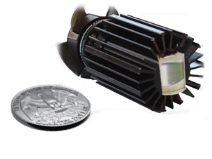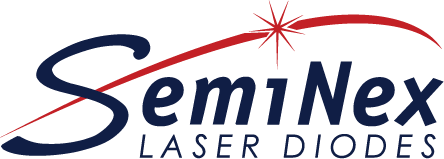Massachusetts, July 22, 2014 SemiNex Corporation, a Peabody, Massachusetts-based manufacturer of high power infrared lasers, was awarded a Small Business Technology Transfer (STTR) grant by the National Institutes of Health (NIH) to develop small laser devices to enhance immune responses to vaccines. The grant enables the development of these lasers and comparative testing against existing large laser systems. To conduct these tests, SemiNex is collaborating with Dr. Satoshi Kashiwagi of the Vaccine and Immunotherapy Center (VIC) at Massachusetts General Hospital, who discovered that treatment of the skin with certain infrared lasers promotes better immune responses to vaccines. With positive results, the company plans to continue collaboration with VIC to develop a small laser device suitable for clinical use.

Early studies by VIC have shown near-infrared (NIR) laser treatment pre-vaccination to increase influenza vaccine efficacy as well as currently-approved chemical adjuvants. A report of the findings can be found in the open-access journal PLOS ONE. Using NIR lasers as an adjuvant has the benefit of being compatible with intradermal vaccines, without any of the side effects seen frequently with chemical adjuvants, such as inflammation and tissue damage. Many influenza vaccines are administered without any adjuvants due to these side effects and the complications of adding a chemical adjuvant to the vaccine.
“The use of an infrared laser to promote immune responses to vaccination is a novel approach that has shown benefit with an influenza vaccine,” said Dr. Kashiwagi. “To reach the clinic, the technology first needs to be more widely assessed by laboratories studying vaccines for other diseases.” Up to now, the lasers used to produce enhanced immune responses to vaccines have been large and expensive laboratory systems that require special technical management. In addition, scientists who work with vaccines are not typically laser experts nor have ready access to technical assistance. Both these factors have made the dissemination of this technology difficult.
The NIH grant will support development of small laser prototypes that will allow testing device kits to be sent to laboratories working on new vaccines. SemiNex currently produces a laser device for skin applications that is small and portable. Dr. John Callahan, Vice President of Engineering & Development at SemiNex, will work in conjunction with VIC to modify the laser device to meet the necessary optical parameters required to further enhance immune responses to vaccination. The grant will also enable SemiNex to develop software to control the laser from a computer, tablet or smart phone. “We are interested in developing a laser system that will be easy for scientists to program, use and advance scientist research and development of wide-ranging medical treatments,” said David Bean, President of SemiNex. “We want to develop tools that will help scientists make advances in health care. The creation of inexpensive devices that can do the same job as more expensive lasers is at the heart of what our company does.”
